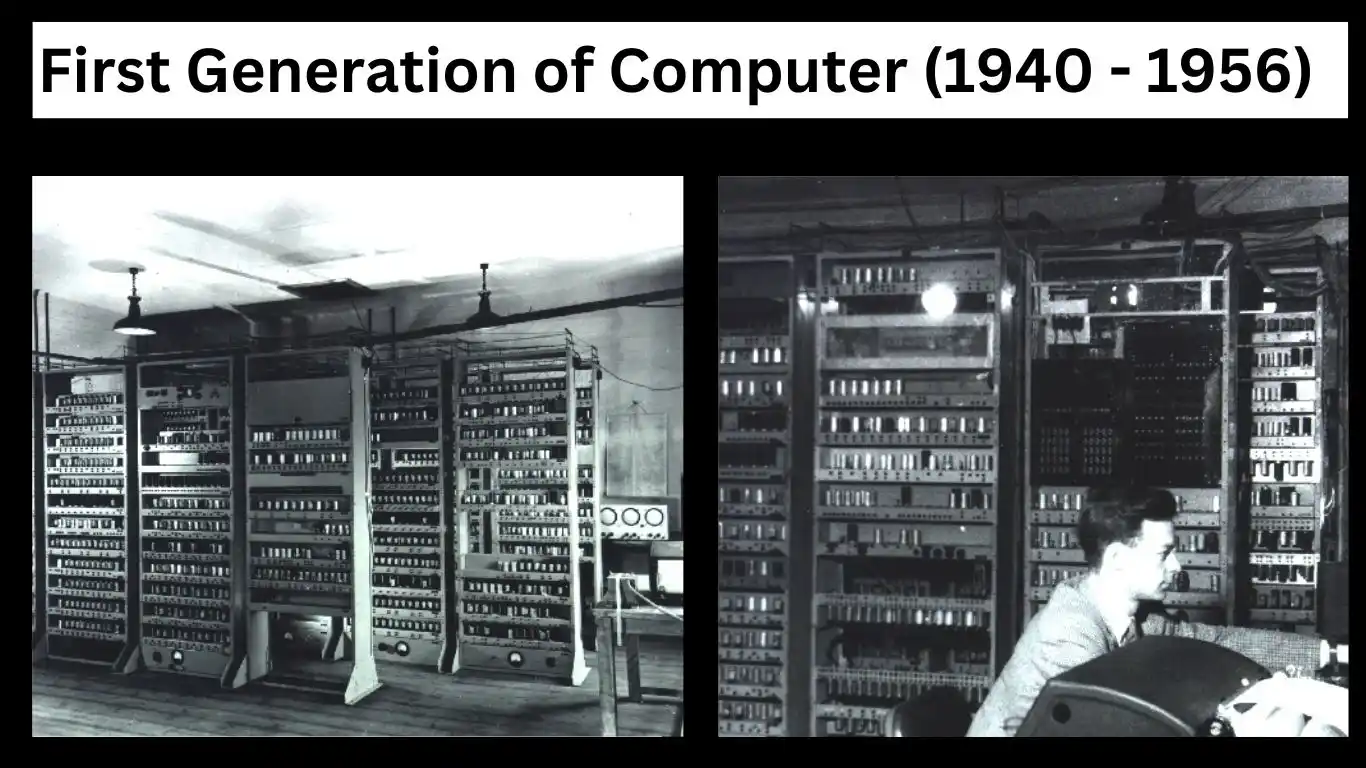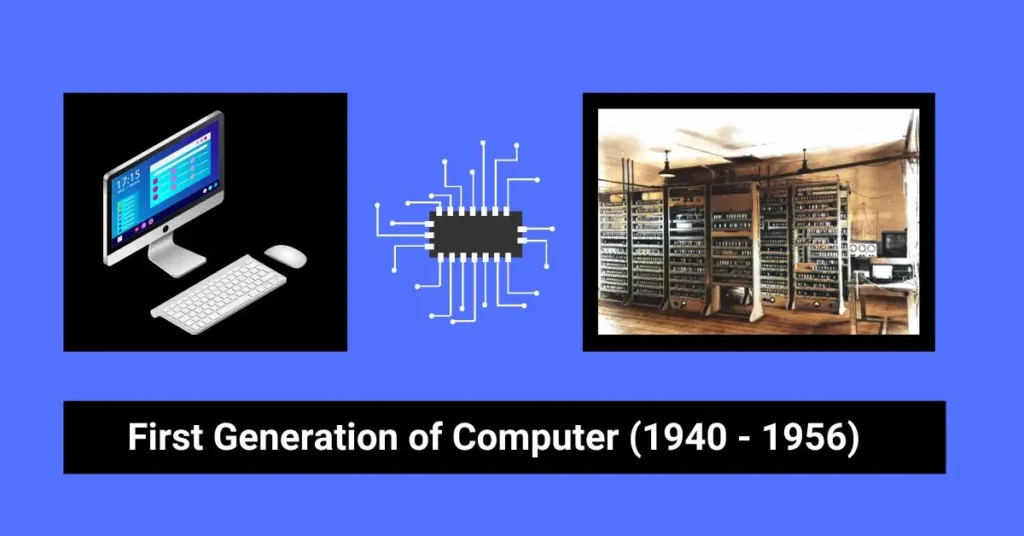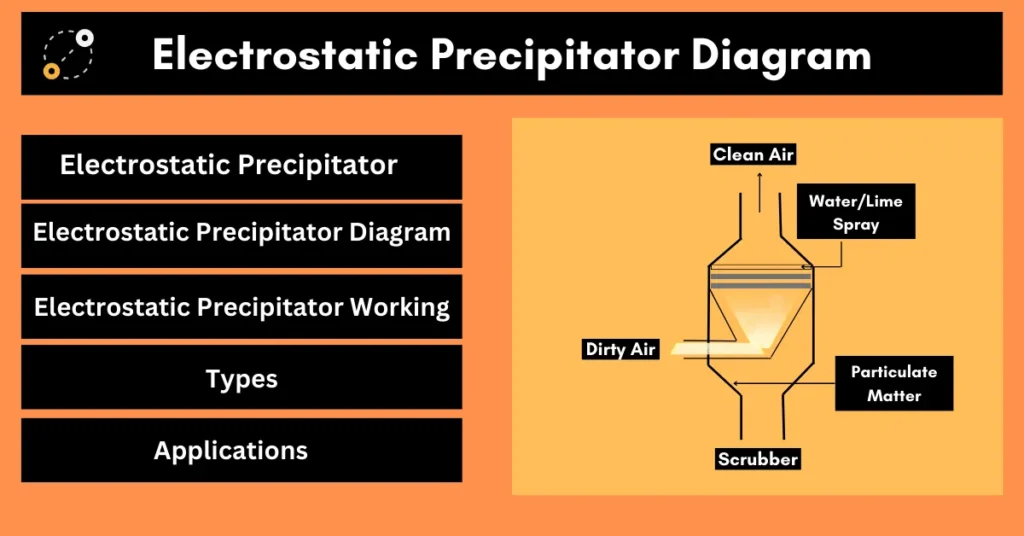There was a time when computers were enormous machines that filled entire rooms. These were the first generation of computer, and they marked the start of our digital journey.
These days, we frequently use computers to do various activities. Every business is now online, and life is easy and convenient. Thanks to computers.
However, as small and common the computers are now, earlier when they were first developed, they were significant and as large as a room. Interesting right? In this article, we’ll discuss those large first generation of computer, it’s examples, advantages and disadvantages.
What is the first generation of computer
The first generation of computer is a generation where the computers were built using vacuum tubes and machine language instructions. Vacuum tubes were the crucial electronic components used in the first generation of computer.
Vacuum tubes are glass or metal tubes that contain electrodes within a vacuum-sealed environment and were used as amplifiers, switches, and signal processors in early computers.
After World War II broke out there was a demand for advanced computation machines by the military organizations for accurate and fast calculations for tasks like artillery trajectory calculations and encryption/decryption of coded messages.
Massive cooling systems were needed to prevent the machines from overheating because of their size. Since all the instructions that could be performed by the machines were pre-programmed into them at the time of production, the first generation of computer was not programmable.
This meant that in order to perform new tasks, the machine’s built-in instructions had to be modified after it was constructed. The first generation of computer year was from 1946-1959. But it all started to begin from the late 1930s.
A German engineer, Konrad Zuse, is often credited with creating the world’s first functional program-controlled computer called the Z3 among the first generation of computer.
Also Read :
First generation of computer was based on which technology
The first generation of computer was based on vacuum tube technology. These early computers used vacuum tubes as their primary electronic components for processing and switching information. The vacuum tubes were used for its logical circuitry.
Eccles and Jordan were the first to describe how to make a series of pulses using linked vacuum tube amplifiers. This idea formed the basis for the flip-flop, a two-state circuit that is a fundamental part of electronic binary digital computers.
The earliest vacuum tube computer or the first generation computer is known as the Atanasoff-Berry computer, an early model which was first displayed in 1939.
The first generation of computer name is often linked with ENIAC (Electronic Numerical Integrator and Computer) and UNIVAC (Universal Automatic Computer). These early computers were built during the 1940s and were characterized by their use of vacuum tubes and punch cards.
Advantages Of First Generation Of Computer
- They could perform complex calculations in milliseconds. ENIAC could perform 5000 additions every second.
- Vacuum tubes were used as electronic components for complex calculations and data processing.
- Increased efficiency and reduced likelihood of human errors in calculations.
- These computers were programmable, allowing users to perform a wide range of tasks by changing the program and input data.
- It allowed for the storage of data and instructions in a digital format.
- Ability to handle large scale computations not possible with mechanical devices or manual calculations.
- First generation of computer was programmable, which laid the foundation for the development of software and programming languages.
- They introduced automation to tasks that were previously done manually.
- Some early business applications, like payroll and accounting, were made more efficient through these computers.
- First generation of computer was more reliable than earlier mechanical devices due to the use of electronic components.
- The development of these computers laid the foundation for further generations of computers, resulting more innovations in computing technology.
Disadvantages of First Generation Of Computer
- Enormous in size, often filled entire rooms.
- Unreliable and could perform only a fraction of the calculations.
- High maintenance costs.
- Vacuum tubes consumed a large amount of electrical power.
- Vacuum tubes generated a significant amount of heat, leading to frequent overheating and hardware failures.
- They had very low work efficiency as Punch cards were used to input data.
- First generation of computer had very limited memory capacity.
- Their complexity and the need for specialized knowledge made them inaccessible to the general population.
- Lack of User-Friendly systems.
- Limited portability, due to their large size and weight.
- The frequent failures of vacuum tubes led to reliability issues, and the computers required skilled technicians to keep them operational.
Features of First Generation Of Computer
The first generation of computer was massive, power-hungry, and relatively slow computers compared to modern standards. The following are the key features of first generation computers –
Vacuum Tubes
Vacuum tubes, also known as electron tubes, were the primary switching and amplifying components in the first generation of computer. They were used for tasks such as logic operations and memory storage.
Central Processing Unit (CPU)
The CPU in first generation computers was made up of multiple vacuum tubes and performed arithmetic and logical operations.
Memory
The first generation computers used a combination of two types of memory –
Main Memory – This was constructed using a matrix of vacuum tubes and electromagnetic components. It was used for storing both data and instructions.
Cache Memory – Some systems had small, high-speed cache memory that stored frequently used instructions and data for faster access.
Input/output Devices
Data was entered into the computer using punched cards, punched tapes, or sometimes manually via switches. Output was often printed on paper or displayed on cathode-ray tube (CRT) screens.
Control Unit
It takes instructions from memory, decoded them, and executed the necessary operations.
Characteristics Of first generation of computer
Large Size
First generation computers were enormous in size. They often filled entire rooms or large spaces and required specialized environments to keep them. The ENIAC had a basement area of 50 feet long and weighed thirty tons.
High Energy Consumption
The vacuum tubes used in these computers consumed a significant amount of electrical power, leading to high energy consumption and the generation of a substantial amount of heat.
A total of 150 kilowatts were utilized by ENIAC, of which 85 kilowatts were used to heat the tubes, 45 kilowatts for DC power, 20 kilowatts for ventilation fans, and five kilowatts of power for punched-card electronic devices.
Power and Cooling
The first generation of computer required a significant amount of electrical power due to the power hungry vacuum tubes. Additionally, they generated a lot of heat, so cooling systems were necessary to prevent overheating.
Limited Memory
The memory capacity was extremely limited compared to today’s standards. They used various types of memory technologies, such as magnetic drums or tubes, but storage capacities were measured in kilobytes or even smaller units.
Punched Cards and Paper Tape
Input and output were often helped with using punched cards or paper tape. Users would create programs and data by punching holes in cards or tape, which were then read by the computer. Results were printed on paper.
Limited Programmability
Programming in the first generation of computer involved writing instructions in low-level machine languages or assembly languages. There were no high-level programming languages like those available today.
High Maintenance
Vacuum tubes were not very reliable and had a relatively short lifespan. This required constant maintenance, as tubes would frequently burn out and need replacement.
Low Processing Speed
The first generation of computer was much slower than modern computers. They could perform basic arithmetic and logical operations, but complex calculations took a significant amount of time.
Calculation
ENIAC, the earliest computer of the first generation of computer, could perform 5000 additions every second. The ENIAC was a decimal machine compared to a binary one.
As a result, calculations were done using the decimal numeration system, and numbers were represented in decimal form.
The device’s memory was made up of twenty accumulators, each of which could hold a decimal range of 10 digits. A ring of ten vacuum tubes showed each numeral.
First generation of computer images

First generation of computer examples
Some notable examples of first generation computers are –
- ENIAC (Electronic Numerical Integrator and Computer), it was developed by J. Presper Eckert and John Mauchly. It was one of the earliest electronic digital computers.
- UNIVAC I (Universal Automatic Computer I), it was the first commercial computer by J. Presper Eckert and John Mauchly. It was designed to bring electronic computing into the business world.
- EDSAC (Electronic Delay Storage Automatic Calculator), it was developed by Maurice Wilkes and opened the door to flexible programming and user-friendly computing.
- EDVAC (Electronic Discrete Variable Automatic Computer), it was developed by John von Neumann, which set standards for computer design.
- Whirlwind I, it was a revolutionary computer built for digital real-time calculation and air defense research.
- IBM-701, introduced in 1952, the IBM 701 used vacuum tubes and magnetic drum memory for computation and storage and was the first commercially successful scientific computer.
- IBM-650, it was a first generation computer introduced in 1954 for business applications, like scientific research, engineering calculations, and data processing tasks.
Some other first generation of computer examples are – BINAC (Binary Automatic Computer), Ferranti Mark 1, CSIR Mk 1, LGP-30 (Librascope General Purpose), NIMROD, Manchester Mark 1, Mark 2, Mark 3, etc.
Other Generations of Computers
Following the first generation of computer, several generations have developed arrived, including :
Second Generation (1950s-1960s) – Transistors replaced vacuum tubes, making computers smaller, more reliable, and faster. Eg – IBM 1401, IBM 7090, and UNIVAC 1107.
Third Generation (1960s-1970s) – Development of Integrated circuits (ICs) allowed computers to become smaller and more powerful. Eg – IBM System/360, DEC PDP-10, CDC 6600.
Fourth Generation (1970s-Present) – Microprocessors were developed, integrating more components onto a single chip. There was a rise of personal computers and workstations. Eg – IBM PC, Apple Macintosh, Commodore 64.
Fifth Generation (Present-Future) – VLSI (Very Large Scale Integration) technology led to powerful microprocessors with millions of transistors. Integration of Artificial Intelligence. Eg – IBM Deep Blue, modern PCs and laptops.
Conclusion
The first generation of computer, which emerged during the late 1940s and early 1950s, marked a significant milestone in the journey of computing technology. Despite some drawbacks, like massive size and limited processing power, this generation of computer proved that electrical calculation was possible, paved the way for future innovations in computing technology, and unlocked new possibilities for scientific and military applications.
Also Read :
- What Is Hybrid Computer ?
- Difference between Primary and Secondary Memory in Computer
- Types Of Video Display Devices In Computer Graphics





